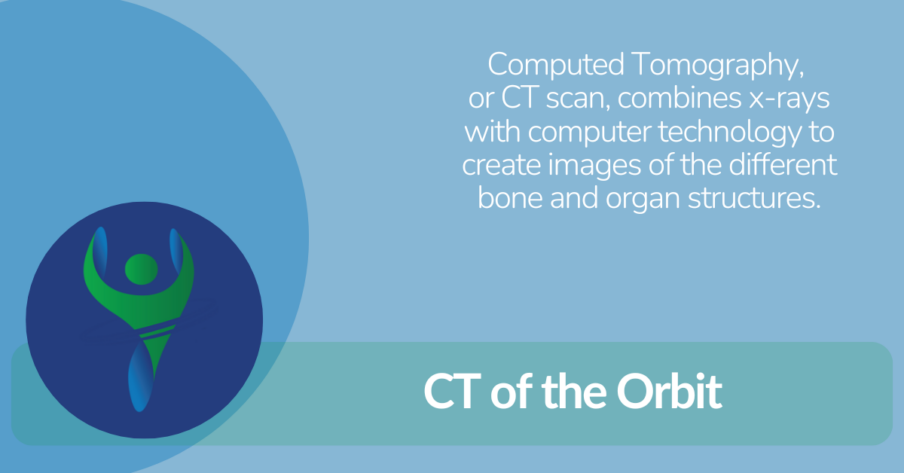CT of the Orbit
A Computed Tomography, or CT scan of the orbit, combines x-rays with computer technology to create images of the eye sockets (orbits), eyes and surrounding bones. Unlike standard x-rays which take a picture of the whole structure being examined, CT has the ability to image that same structure one “slice” at a time.
A limitation of x-rays alone, is dense tissues can block the view of the body structures behind them. In CT, the various slices clearly show both bone and underlying soft tissue. CT assists physicians in both diagnosis and detection of a variety of eye conditions at an early stage.
CT scanning is a non-invasive method of diagnosis for symptomatic patients with issues that require a view inside the body. It is a short, painless procedure with low amounts of radiation.
When would I get a CT of the Orbit?
A CT of the orbit may be used to evaluate traumatic fractures, orbital tumors, assess orbital inflammatory disease, and orbital foreign bodies. Orbit CT can also be used to plan for future treatments and surgeries.
A physician or other medical provider may recommend a CT of the orbit to further evaluate:
- an abnormal protrusion or displacement of an eye
- a droopy eyelid
- paralysis or weakness of the eye muscles
- paranasal sinus disease affecting the eye(s)
- a serious infection that involves the muscle and fat located within the orbit
- orbital trauma
What Will I Experience?
A contrast material is often injected into the blood, intravenously, during a CT of the orbit.
The contrast makes blood vessels and eye structures more visible on the CT images. During a CT scan, the head is positioned inside a ring or “gantry” that is part of the CT scanner. The ring can tilt and the x-ray scanning devices within it can rotate to obtain the views needed.
According to most people, the challenging part of a CT exam is from time to time the need to lie perfectly still for a longer period.
If no oral contrast is required, the examination will take about 15 to 30 minutes, including the time for exam preparation and interview. In some cases, additional scanning is required as scans are tailored to suit individual diagnostic needs.



